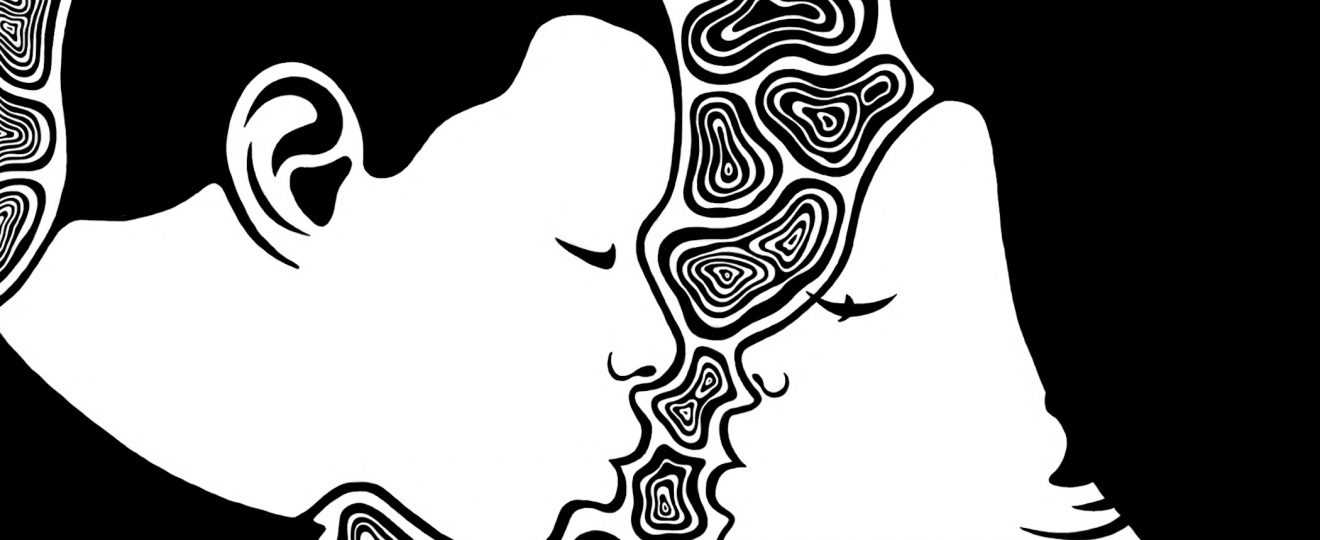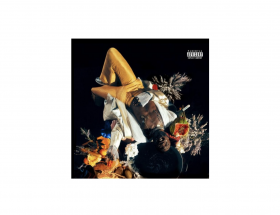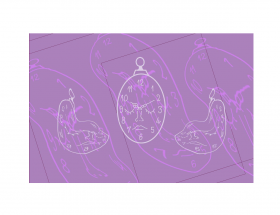Love In Colour is predominantly an anthology of romantic short stories, a collection which Babalola herself adeptly names ‘mythical tales from around the world, retold.’
A self-titled ‘romcomoisseur,’ the conception of Bolu Babalola’s writing career reflects the preferred medium of today. We can see a new generation utilising the capabilities of social media platforms–in Babalola’s case, Twitter- not only to exercise its writing muscle, but to solidify literary style. Babalola is a writer uncharacteristically open about her penchant for romantic literature, dreamily tweeting about her ‘jock boyfriend’ if she were a character in a high school movie. Her outlook seems unbelievably positivist and has an undeniable romantic tint; in an interview with Nosheen Iqbal she claims that, ‘we need art to have hope, especially when the world is so full of bleakness, and romcoms do that.’
Her motives for writing about relationships and romance, however, are a little more loaded than we would first realise. We all like rom coms (most of us. Well, the good ones, anyway): watching Matthew McConaughey falling in love and growing up, Channing Tatum flawlessly street-dancing with his big love, following the rocky trajectories of both Harry and Sally, anything written by David Nicholls (yes, I had to google top 60 rom coms, it’s been a while). Babalola vindicates our unanimous guilty pleasure, as she is a stalwart believer in the strength to be found in love. ‘People think of love as a fluffy emotion, but it’s not – it’s steely and powerful and it can bring out courage in us.’ And with this hard love, this powerful, sharp-cornered love, she presents her mythical tales from around the world.
From Greek mythology to Nigerian folklore, Babalola’s reworked tales span the globe. While love is a universal human emotion, her central heroines demonstrate that all women, of all races, are both strong and worthy of love, in a much more unequivocal manner than the stereotyped, so-called ‘Disney effect’ that seemingly favours golden hair, nipped-in waists and globular blue eyes. Described commonly as ‘glorious’ and ‘abundant,’ the collection marks a beautiful and important retelling of classical and mythological love stories, as Babalola, through her characters, celebrates black female empowerment. In this text, readers are presented with an ode to black women and diverse communities, just as much as an ode to love itself.
In re-writing tales that traditionally hailed violent men and feeble women, Babalola harnesses her preference for the rom-com genre in a way that also dismantles both patriarchal and Western stereotypes. In Siya, for example, the narrator explores the lesser known culture of the Soninke people of Wagadou, an ancient African civilisation. In Babalola’s retelling, Siya is a fierce warrior and tribe leader unlike the ‘helpless’ virgin of the original tale, whose main plotline is to be betrothed and sacrificed to a man. During the writing process, Babalola continuously asked, ‘what if I consolidate myth and reality and make her a star on earth?’ (Think also of the tale of Zhinu, inspired by the original Chinese folklore tale, ‘The Cowherd and the Weaver Girl’ where Zhinu is an actual pop star). Babalola succeeds, in her literary journey across the world, in making the referential ‘her’ the star of the poetic show as well as on ‘earth.’
Perhaps the most infamous tale that is reformed in this collection is that of Ancient Egyptian philosophy. We all remember learning about the pyramids, the pharaohs, and the sphinxes in school, but Nefertiti poses Ancient Egypt as a metropolitan dystopia, where we see justice side with the independently fierce protagonist, who fights tooth and nail to end oppression, albeit through morally questionable acts. It is in these spaces, like Ancient Egypt, that Babalola’s writing presents its most flourishing vitality. Indeed, her overarching message, of exemplifying the complexities of life as a modern, black woman, as well as the aforementioned strength in romantic love, are seen to shine that bit brighter in their historically reapplied contexts. We, as readers, are privy to a literary ‘turning of the tables’ on patriarchal tropes as well as Western civilisation’s (sometimes) forcefully entitled expectations. Indeed in this tale, in a pattern that is drawn through the others in the anthology, Nefertiti is the embodiment of power and decisiveness: the model leader.
In an interview with Jessica Morgan, Babalola understood that ‘in recent years, a lot of the stories have been focusing on Black trauma.’ Her tales then serve to empower black women, not by exemplifying their struggle, but by demonstrating their resilience, self-awareness and strength; and it is through setting that this is so effortlessly achieved. In Naleli, we witness a woman who learns to appreciate and love her external appearance, despite being previously judged by it. The tale enjoys a complete overhaul, from one that depicts es a woman whose extreme beauty is hidden by a cloak of crocodile skin–as the Yoruba myth ‘How Khosi Chose His Wife’ goes- only to be shed in a creepily ceremonious pool-washing scenario, which is later spied on and taken as a wife. Indeed it is the Lethosian sun (set in a kingdom in South Africa) that prompts Naleli’s literal and figurative disrobing, which forms the impetus of the story’s emotional spine.
Drawing on Yoruba mythology, Chinese folklore, Ancient Egyptian myths, Nigerian oral history, Lagosian fables, and Greek legend, we see an undeniably beautiful dismantling of the foundations of both colonialism and patriarchy. It is clear that by adopting these spaces and contexts, Babalola intends to embolden the spirit; and in turn empowers these women. In the Author’s Note to the book, Babalola confirms that the anthology ‘provided [her] the wonderful opportunity to play with myths, stretching them into newer versions and worlds far removed from where they began.’ It is only by exploring these different locations in both space and time that Love In Colour flourishes as a text that reworky patriarchal folklores and mythological tales in such a way that comments on contemporary culture in its treatment of both race and gender. It would be wise to delve into Babalola’s faraway lands, as one would learn much about the society just outside the door.
Art by Tia Merotto




